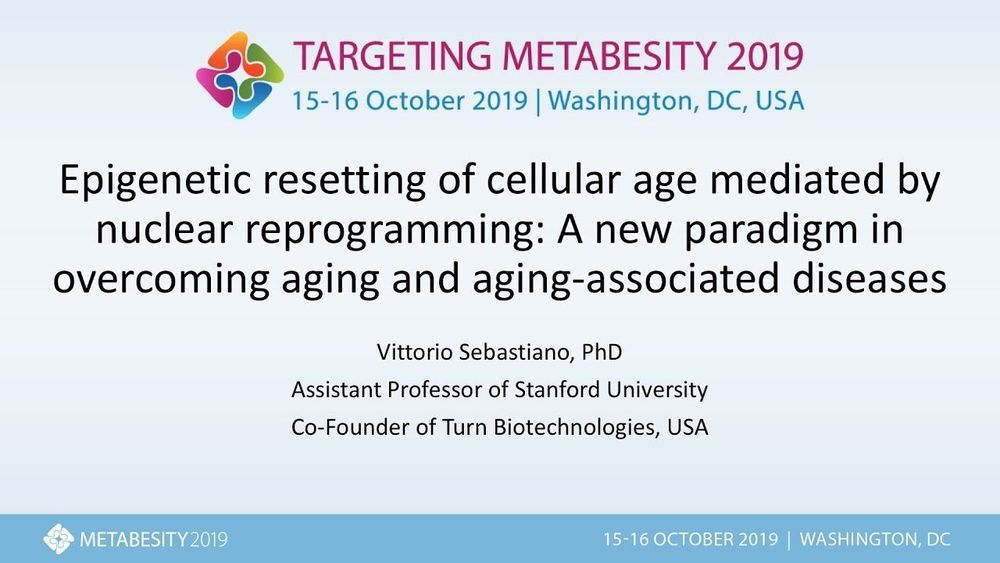Nov 3, 2019
New blood test could spot breast cancer five years before symptoms show
Posted by Genevieve Klien in category: biotech/medical
The method has been trialled successfully, and could be ready for use in as little as four years.
The method has been trialled successfully, and could be ready for use in as little as four years.
A team of researchers affiliated with several institutions in France has revisited the idea of improving on estimates of the upper limit of the mass of a graviton. In their paper published in the journal Physical Review Letters, the group describes their accurate measurement of the parameters of planetary bodies and what they found.
Einstein’s theory of general relativity suggests that the gravity of large masses that warps spacetime comes from a theoretical massless particle called the graviton. Scientists have been trying for many years to either prove the theory correct or disprove it by finding a way to show that it has mass. One approach to such a proof involves studying the speed of the expansion of the universe—this approach has suggested that if the graviton does have a mass, its upper limit would be approximately 10 −32 electron-volts. Unfortunately, this result is based on a lot of assumptions, many of which are still controversial. Another way to do it is by studying planetary orbital deviations that could only come from a nonzero graviton mass—and starting with the assumption that if a graviton has zero mass, then like the photon, it should travel at the speed of light. In this new effort, the researchers have found a way to improve the accuracy of this approach.
The work involved temporarily freezing the motion of the stars and planets at different points in time—the first was the year 2000. The researchers found the masses, positions and speed of the sun, the planets and several asteroids for that year. They then ran equations that allowed them to roll forward in time to 2017 and back to 1913 and forward again as needed. These time periods were chosen because the team was able to find usable data for them. In running the calculations, the researchers found that they were able to come up with an estimation for the upper limit of the graviton of 6.76 × 10 −23—with a probability of 90 percent. The researchers note that their number was very close to that found by a team using data from the LIGO interferometers, but suggest that any similarities were purely coincidence.
We know little about how brains produce happiness or anger. One scientist’s work is helping to explain why, revealing a possible link between sex and violence.
Fifty young scientists were bestowed Xplorer Prize in Beijing Saturday.
Apart from receiving a trophy at Saturday’s ceremony, each of the 50 prize winners will be awarded a total of 3 million yuan (about 426,000 U.S. dollars) over the next five years by the Tencent Foundation, according to the prize’s sponsor and initiators.

Metabesity 2019: Epigenetic resetting of cellular age mediated by nuclear reprogramming – A new paradigm in overcoming aging and aging-associated diseases.
Featuring Vittorio Sebastiano, PhD, Assistant Professor of Stanford University; Co-Founder of Turn Biotechnologies, USA
For more information, see www.metabesity2019.com
Shanghai hosted one of the largest gatherings of Nobel laureates in the world last week, with 44 Nobel Prize-winning scientists in the city for a government-sponsored forum with the lofty goal of discussing science and technology for the “common destiny of mankind”.
Chinese academics and young scientists join global scientific elite to explore frontiers of research.
Hemp is poised to become an immense new source of sustainable, domestically produced industrial raw materials.
Life is pretty different now than it was 20 years ago, or even 10 years ago. It’s sort of exciting, and sort of scary. And hold onto your hat, because it’s going to keep changing—even faster than it already has been.
The good news is, maybe there won’t be too many big surprises, because the future will be shaped by trends that have already been set in motion. According to Singularity University co-founder and XPRIZE founder Peter Diamandis, a lot of these trends are unstoppable—but they’re also pretty predictable.
At SU’s Global Summit, taking place this week in San Francisco, Diamandis outlined some of the meta-trends he believes are key to how we’ll live our lives and do business in the (not too distant) future.
Capturing infrared light for solar cell applications.
Invisible infrared light accounts for half of all solar radiation on the Earth’s surface, yet ordinary solar energy systems have limited ability in converting it to power. A breakthrough in research at KTH could change that.
A research team led by Hans Ågren, professor in theoretical chemistry at KTH Royal Institute of Technology, has developed a film that can be applied on top of ordinary solar cells, which would enable them to use infrared light in energy conversion and increase efficiency by 10 percent or more.
Continue reading “Nanotechnology breakthrough enables conversion of infrared light to energy” »
